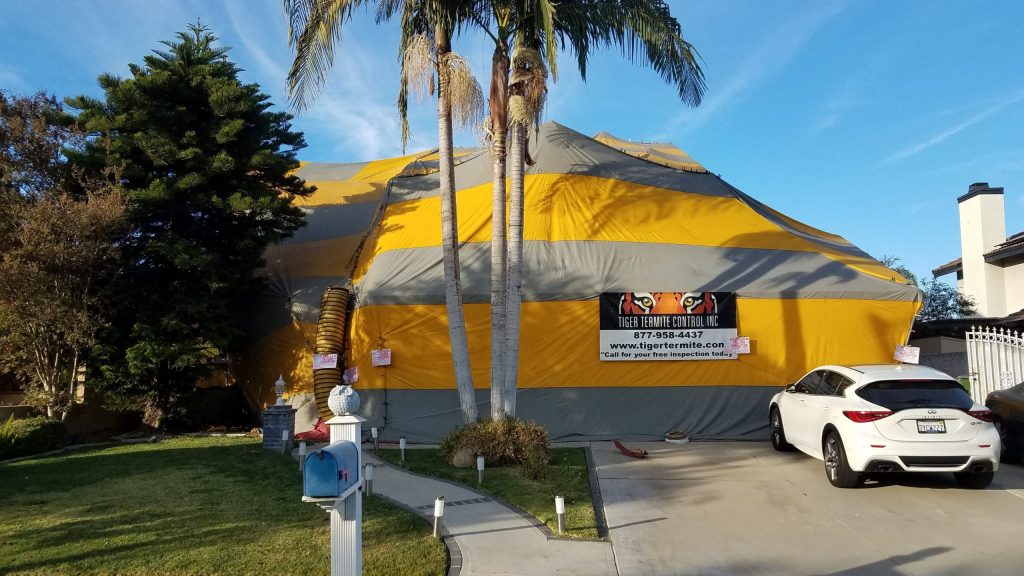Tenting for termites has become a popular method for controlling termites and protecting homes from infestations. This article will provide an introduction to this pest control method, its advantages and disadvantages, and the steps to take when tenting for termites.
What Are Termites?
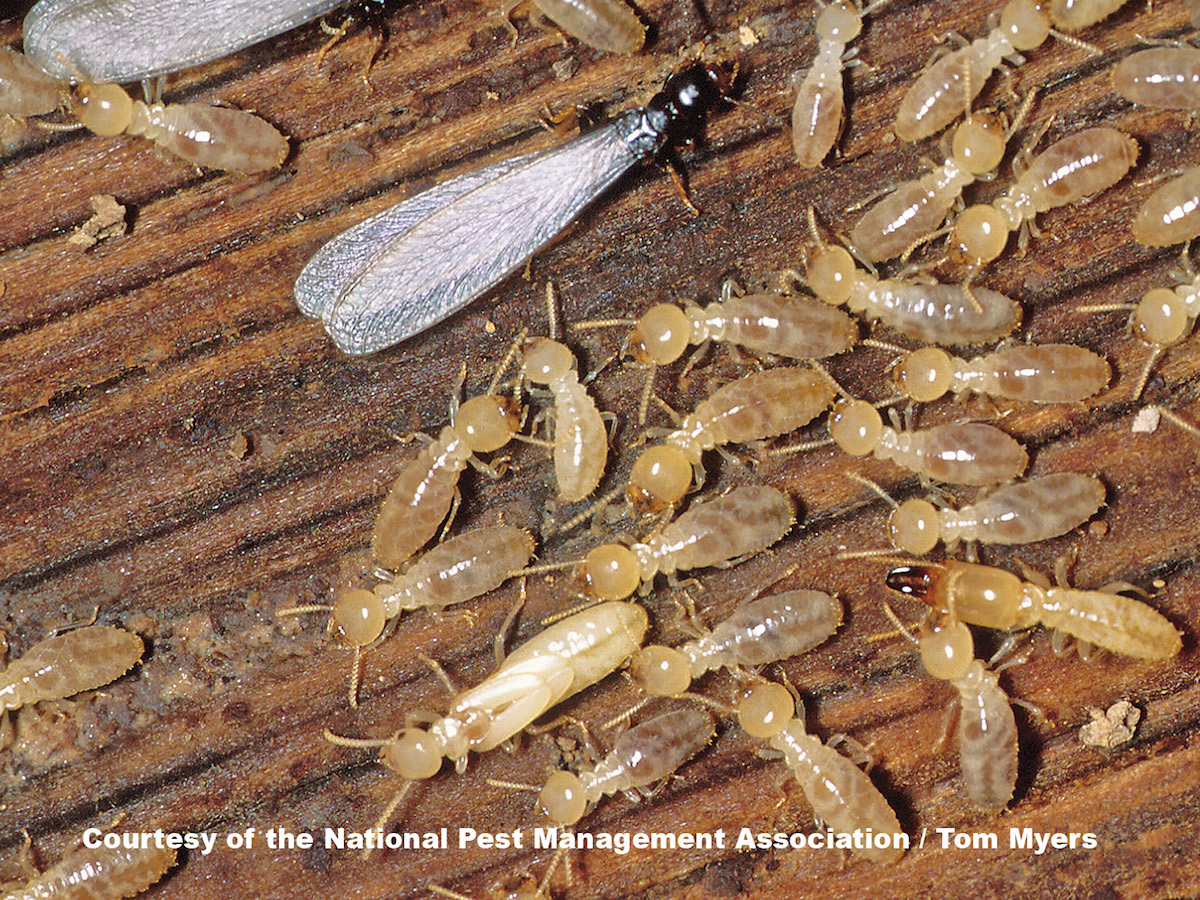
Termites are small, wood-eating insects that live in colonies of up to several million members. They feed on wood, paper, and other cellulose-containing materials, causing extensive damage to homes, buildings, and other structures. Termites are divided into two main groups: subterranean and drywood. Subterranean termites live in the soil and build intricate tunnels and galleries to access their food sources. Drywood termites live inside the wood they feed on and require no contact with the soil.
| Type of Termite | Location |
|---|---|
| Subterranean | Soil |
| Drywood | Wood |
Types of Termites
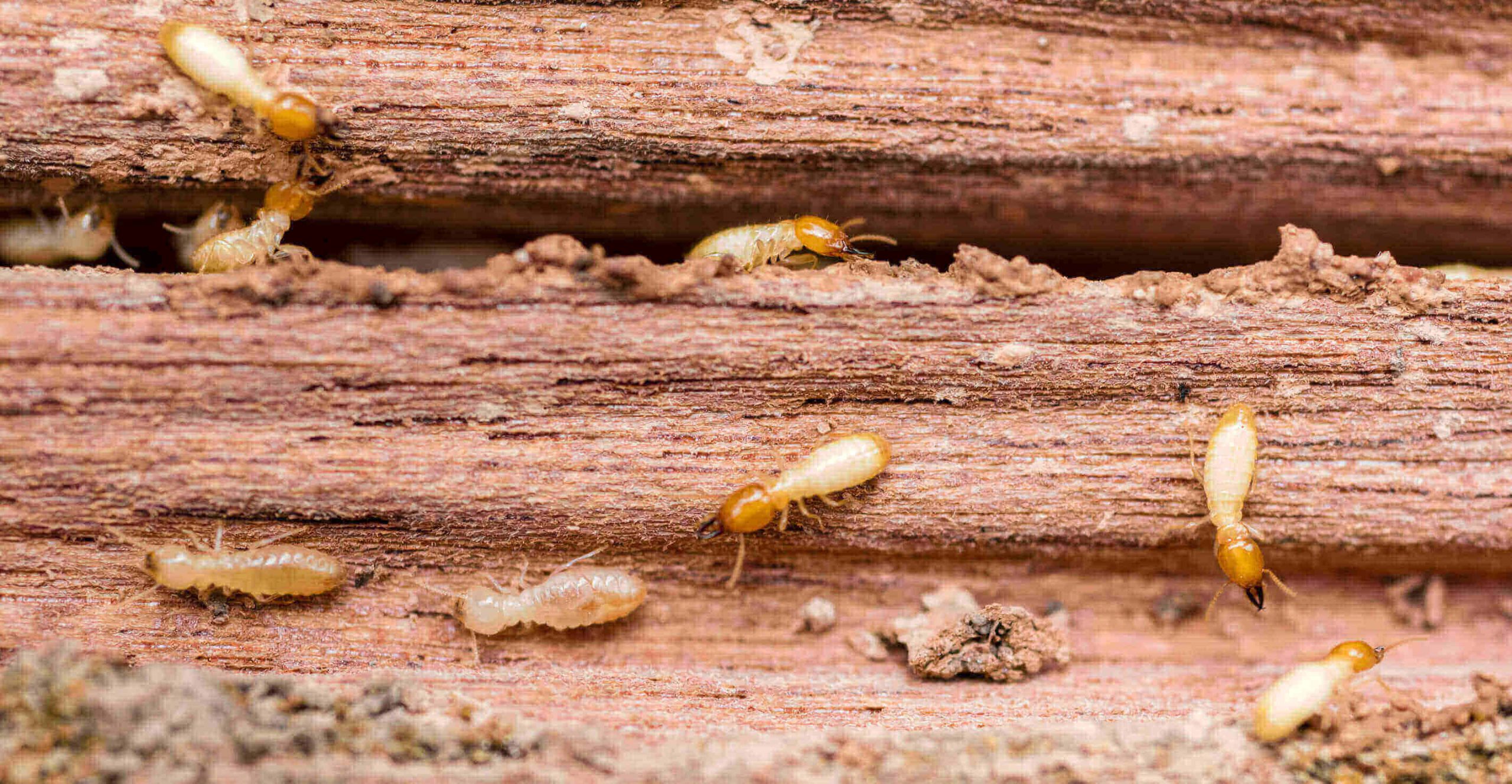
| Type | Description |
|---|---|
| Drywood Termites | Wood-eating species that build large colonies inside drywood. They do not require contact with the soil. |
| Subterranean Termites | Found in almost every state in the U.S., they build their colonies in the soil and require contact with the ground. |
| Formosan Termites | A highly destructive species of subterranean termite found in the southern U.S. They can build large colonies and cause extensive damage in a short period of time. |
Termites are insects that can cause extensive damage to wood structures, furniture and other items made of wood. They are divided into three main categories: drywood termites, subterranean termites and Formosan termites. Drywood termites are wood-eating species that build large colonies inside drywood. They do not require contact with the soil. Subterranean termites are found in almost every state in the U.S. and build their colonies in the soil, requiring contact with the ground. Formosan termites are a highly destructive species of subterranean termite found in the southern U.S. They can build large colonies and cause extensive damage in a short period of time.
Signs of a Termite Infestation
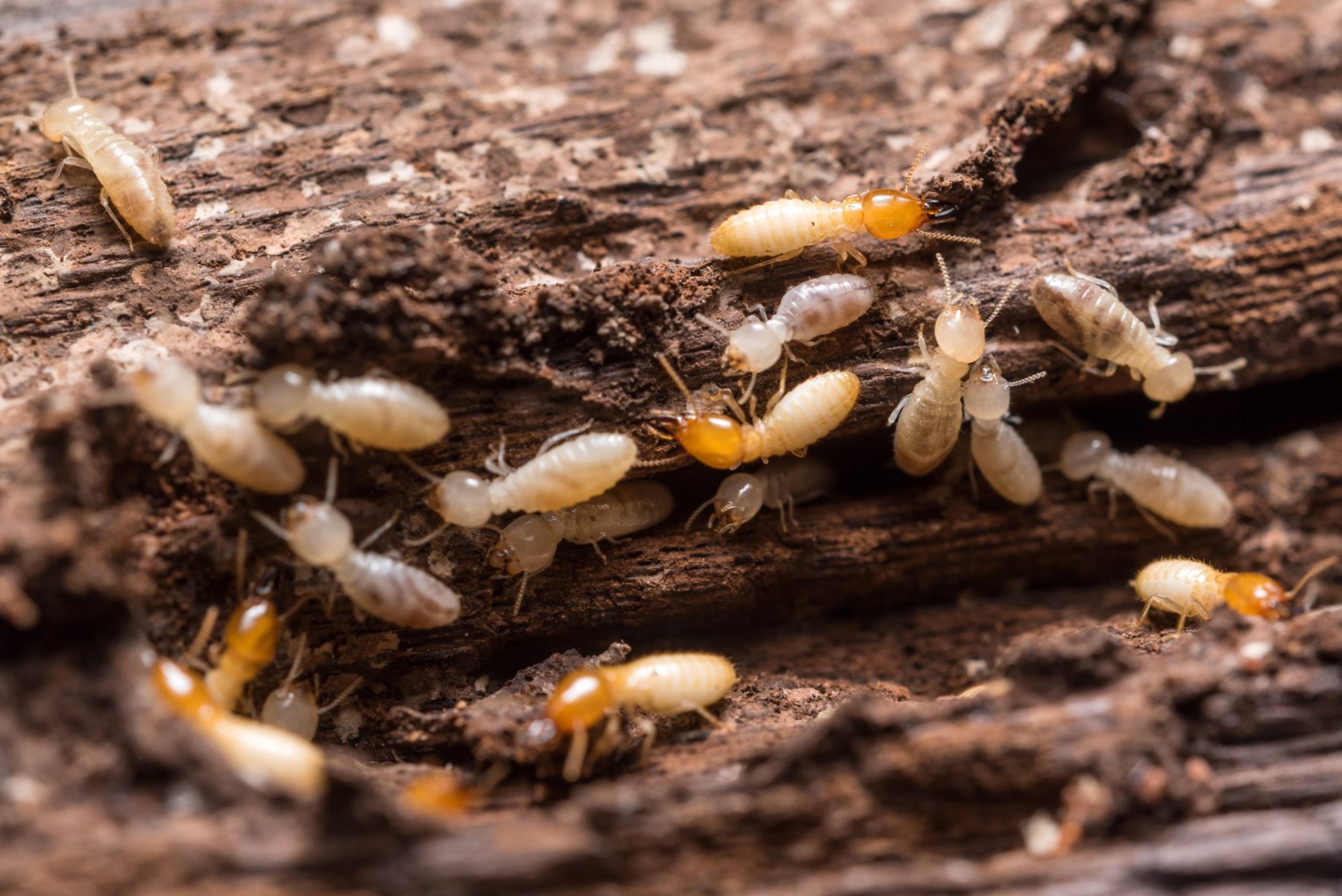
Subterranean termites prefer to live in the soil and wood. They often remain hidden, making it difficult to detect an infestation. However, there are some signs which may indicate a termite problem.
Termite damage often appears as soft, easily excavated wood, similar to the texture of a rotting apple. Look for any hollow sounding wood when tapping on it with a blunt object. Check for mud tubes, which termites use to travel above ground, as well as swarms of winged termites in the home or around windows and doors. Look for termite droppings, which are similar in size and shape to coffee grounds.
If you notice any of the above signs, it is important to contact a pest control professional to determine the extent of the infestation and discuss the best approach for tenting for termites.
Tenting as a Method of Termite Treatment
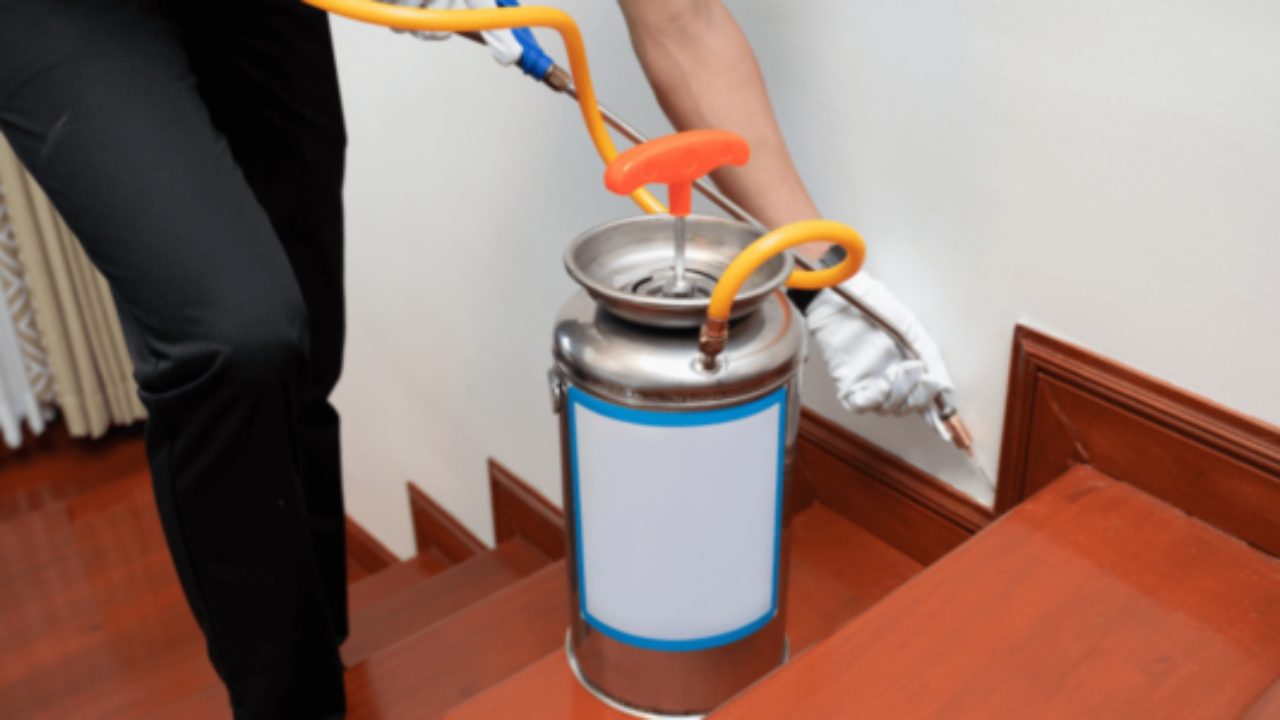
Tenting is a form of termite treatment that is used to eliminate entire colonies of termites from a structure. It is often used as a last resort when traditional treatments have failed or when the infestation is severe. The process involves covering the structure with a tent, and then pumping in a fumigant to penetrate the wood, killing the termites inside.
The tent is generally made of flexible plastic and is sealed with tape or staples. It is put up several days before the treatment and left up for several days afterward. During this time, the structure must be vacated and all food and perishables must be removed. Pets and plants must also be moved away from the site.
When the tent is in place, a fumigant is pumped into the structure. This fumigant is a gas that penetrates the wood, killing all of the termites inside. The fumigant is left in the structure for a period of time, usually ranging from 12 to 24 hours.
Once the treatment is complete, the tent is removed and the structure is aired out for several hours. After this, the homeowners can move back in and the structure can be used as normal.
Tenting is a very effective method of termite treatment, but it is also expensive and disruptive. As such, it should only be used if other treatments have failed or if the infestation is severe.
Preparing for Tenting
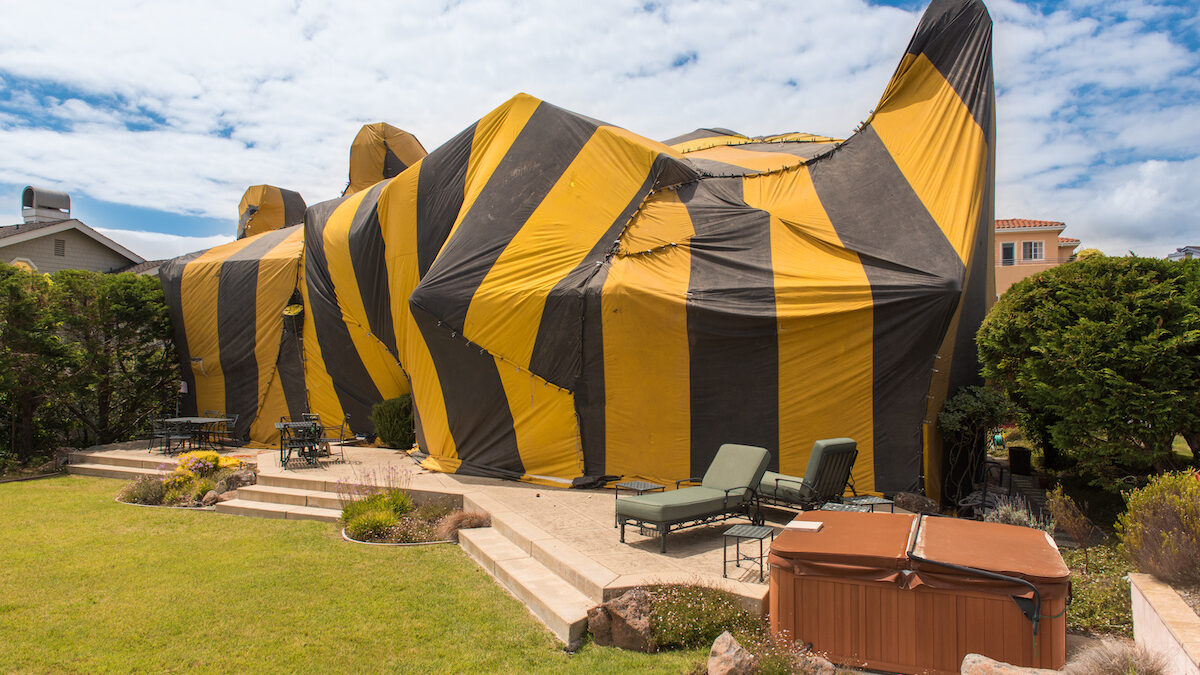
| Steps | Description |
|---|---|
| 1. Inspect the area | Inspect the area to be tented for any possible entry points for the termites, such as cracks in the foundation or walls, exposed wood, and other points of entry. |
| 2. Remove any objects | Remove any objects from the area that may be affected by the tenting, such as furniture, carpets, plants, and other items. Make sure to cover any items that cannot be moved with plastic sheeting. |
| 3. Seal all entry points | Seal all possible entry points for the termites, such as cracks in the foundation or walls, any holes in the walls, and any open doors or windows. This will ensure that the termites do not enter the area while the tenting is taking place. |
| 4. Prepare the tent | Prepare the tent for tenting by setting it up and sealing all edges with tape or plastic sheeting. Make sure to leave enough space for any vents or openings to allow for ventilation. |
| 5. Ventilate the area | Ventilate the area by opening all doors and windows to allow for air circulation. Make sure to seal all windows and doors to prevent the tent from becoming dislodged. |
Once all of the preparations have been completed, the tenting can begin. Make sure to follow all safety guidelines and instructions when tenting for termites.
Tenting Process
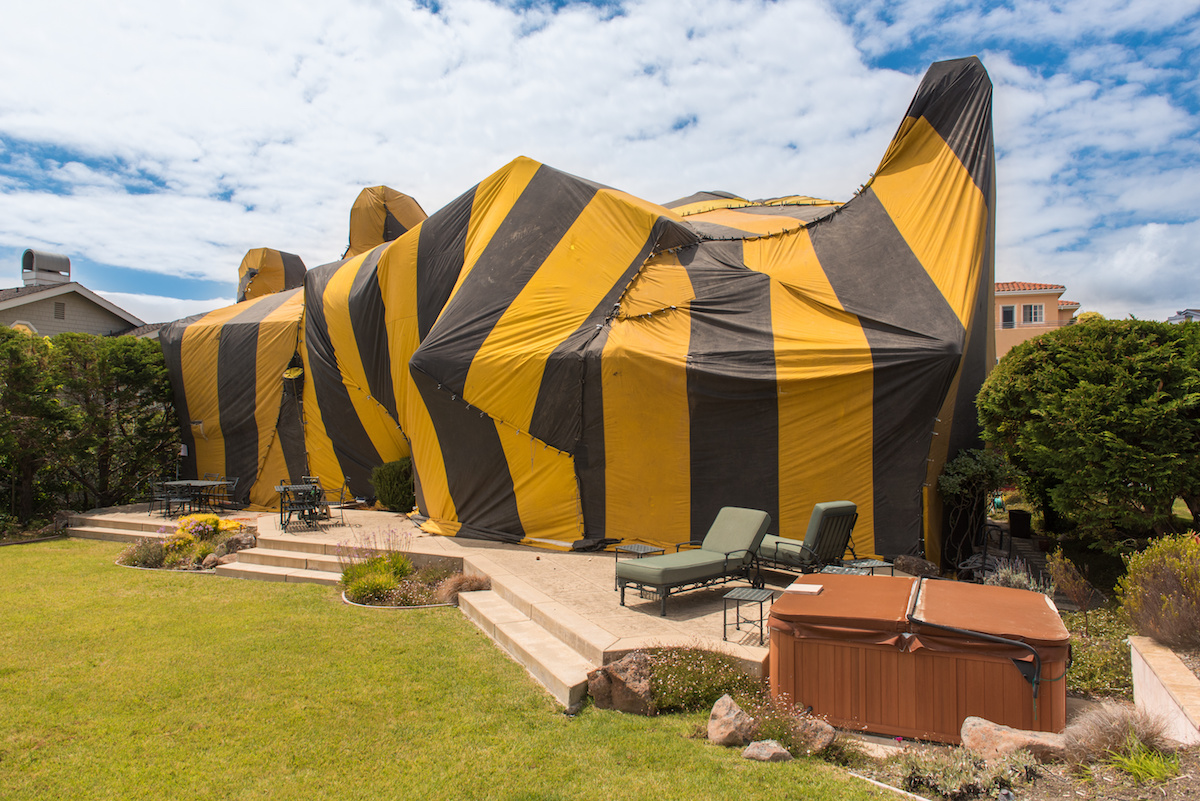
- Identify the affected area.
- Clear the area of all furniture, plants, and food items.
- Prepare the tenting area by sealing off windows, vents, and other openings.
- Apply a pesticide to the area in a liquid form.
- Cover the tenting area with a tent.
- Fill the tent with a gas pesticide.
- Wait for the gas to work for a few hours.
- Ventilate the tent with fans to remove all traces of the gas.
- Remove the tent and all protective materials.
- Vacuum all surfaces to remove any residue.
- Clean the area thoroughly.
After Tenting
Once the tenting is complete, the fumigation process will take anywhere from 8 to 24 hours. During this time, it is important to keep away from the area. The tenting company will typically leave instructions for re-entry and will advise when it is safe to return to the property. After re-entry, it is important to check the property for any holes or openings that may have been caused by the fumigation process. Once the area has been inspected, the tenting company will remove the tent and any equipment associated with the fumigation. A final inspection of the area should be conducted to ensure that all signs of the tenting have been removed.
It is important to note that the fumigation process may not entirely solve the termite problem. It is important to follow up with a professional pest control company to conduct a full inspection of the property. The pest control company can then advise the best course of action to ensure the area remains free from termites.
Alternatives to Tenting
- Bait Station Installation – Bait Stations are installed around the perimeter of your home and contain small amounts of slow-acting insecticide that is designed to only kill termites. When the termites feed on the bait, they carry it back to the nest and spread it among the colony.
- Direct Liquid Treatment – Liquid termiticides are injected into the soil around the foundation of your home to create a barrier that termites can’t penetrate. This is usually done with a technician using a power sprayer or a “rodding” system that injects the termiticide into the soil.
- Foam Injections – Foam termiticides are injected into cracks and crevices in your home, such as around windows, doors and utility lines. This creates a barrier that prevents termites from entering your home.
- Wood Treatments – Wood treatments involve treating the wood in your home with a termiticide. This can be done with a brush, spray or dip treatment.
Frequently Asked Questions
What is the process of tenting for termites?
Tenting for termites involves covering a structure with a tent-like material, then pumping in insecticide gas. This gas kills the termites and their eggs. The tent is left in place for several days to ensure all termites are killed and the insecticide has had time to dissipate. After the tent has been removed, the structure is inspected for any remaining termites and treated if any are found.
How often should a house be tented for termites?
Tenting a house for termites should not be done on a regular basis. Generally, if a house has been tented for termites, then it should not need to be tented again for at least five years. If the house has not been tented before, then it should be tenting every five to seven years, depending on the area and local regulations. If the house is in an area with a high risk of termite infestation, then tenting should be done more frequently. It is recommended to consult a professional pest control specialist to determine the best schedule for tenting.
Are there alternatives to tenting for termites?
Yes, there are alternatives to tenting for termites. One such alternative is the use of specialized pesticide products that target termites directly instead of fumigating the entire area. Another alternative is to physically remove the termites by digging and removing the affected wood, or by using traps and baits. Finally, some pest control companies offer non-toxic, natural remedies to get rid of termites.
What precautions should be taken before tenting for termites?
Prior to tenting, it is important to understand the process and the potential effects. It is important to notify neighbors and local authorities, as well as to remove food, plants, and pets from the area. All flammable materials should be removed and all electrical equipment should be unplugged. Additionally, all ventilation systems should be shut off and all windows should be sealed. It is also important to ensure that the tenting is done in the right weather conditions.
What are the long-term effects of tenting for termites?
Tenting for termites is a process of fumigating an entire structure with a gas in order to kill all termites present. The long-term effect of tenting is that it can provide long-lasting protection against future infestations. In some cases, it may even be able to prevent future infestations by killing off the reproductive termites and eggs. Additionally, tenting helps to reduce the number of wood-destroying insects and can help to reduce the amount of damage done to the structure.
Conclusion
Tenting for termites is an effective way to protect your home from structural damage caused by these pests. This approach is known to be highly effective in eliminating termite colonies and preventing future infestations. It is important to note that tenting is not a DIY job and it should be done by a professional pest control company. Additionally, it is essential to regularly inspect your home for signs of termite activity and to contact a professional if any evidence of an infestation is found. Doing so can help prevent costly damage to your home and protect the safety of your family.

